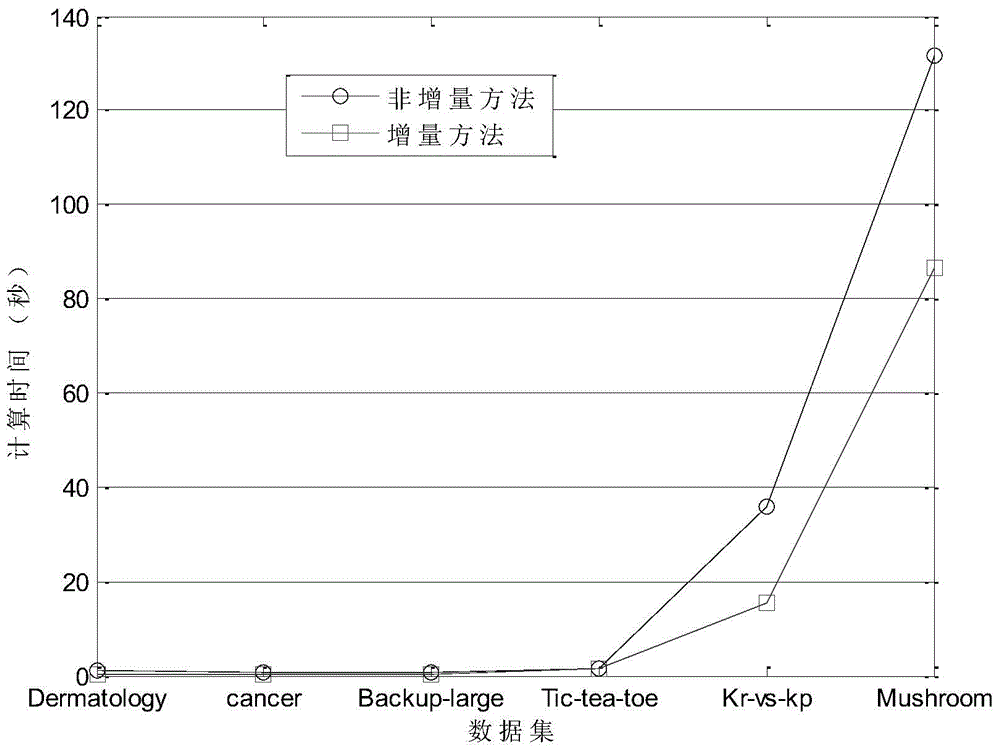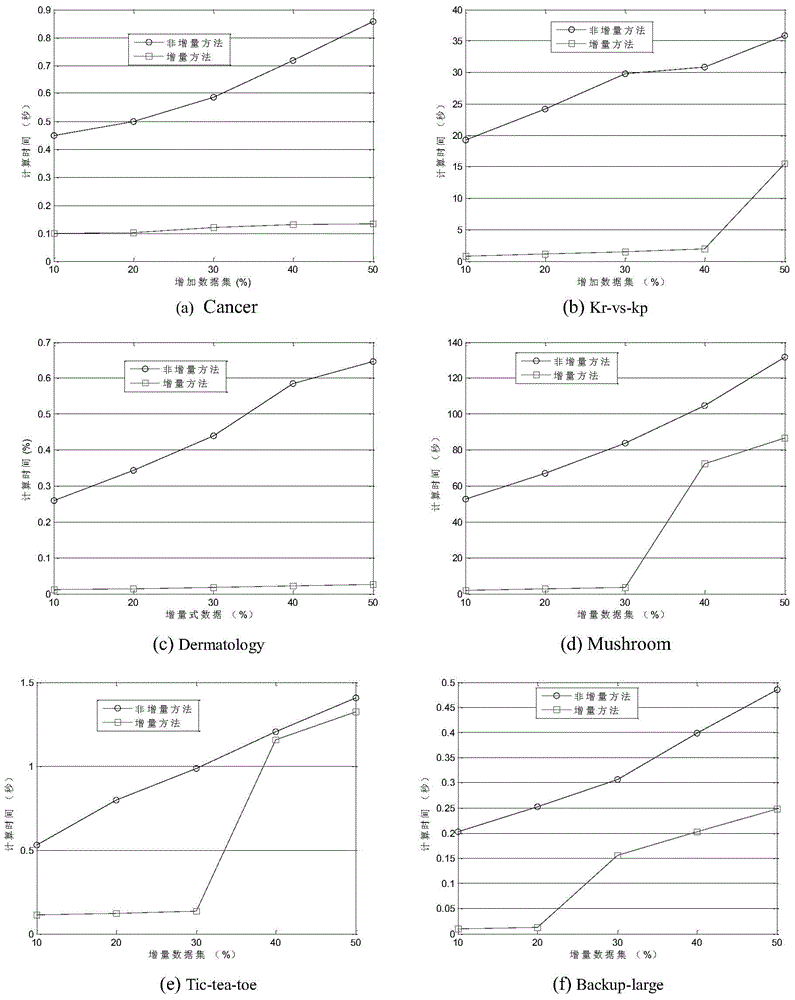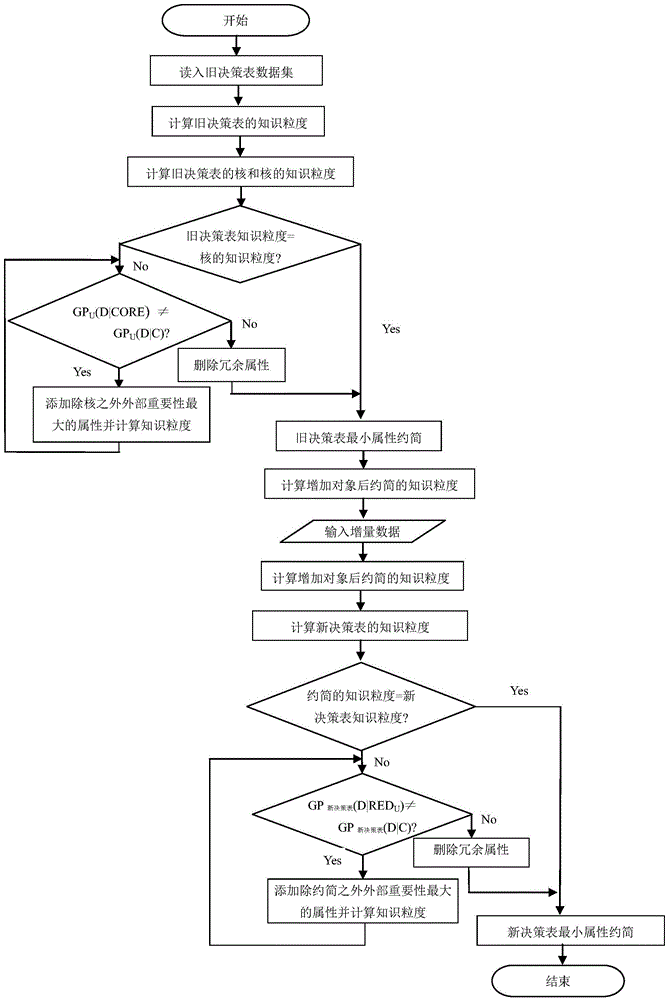Matrix increment reduction method based on knowledge granularity
A knowledge granularity and matrix technology, applied in complex mathematical operations and other directions, can solve problems such as time-consuming, batch learning algorithms are difficult to extract useful information and knowledge, etc., to achieve easy implementation, improve reduction calculation efficiency, and reduce calculation time. Effect
- Summary
- Abstract
- Description
- Claims
- Application Information
AI Technical Summary
Problems solved by technology
Method used
Image
Examples
Embodiment Construction
[0034] combine image 3 The specific implementation steps are as follows:
[0035] Input: Existing decision table (including object set U, conditional attribute set C and decision attribute set D and object attribute values) (called old decision table), some new objects (denoted as incremental data set U X ={x n+1 ,x n+2 ,...,x n+t}) is added to the old decision table to form a new decision table.
[0036] Step 1: Use the matrix method to calculate the knowledge granularity of the old decision table Equivalence Relation Matrix of Old Decision Table ( M U R C ) n × n = ( m ij ) n × n ...
PUM
 Login to View More
Login to View More Abstract
Description
Claims
Application Information
 Login to View More
Login to View More - R&D Engineer
- R&D Manager
- IP Professional
- Industry Leading Data Capabilities
- Powerful AI technology
- Patent DNA Extraction
Browse by: Latest US Patents, China's latest patents, Technical Efficacy Thesaurus, Application Domain, Technology Topic, Popular Technical Reports.
© 2024 PatSnap. All rights reserved.Legal|Privacy policy|Modern Slavery Act Transparency Statement|Sitemap|About US| Contact US: help@patsnap.com










